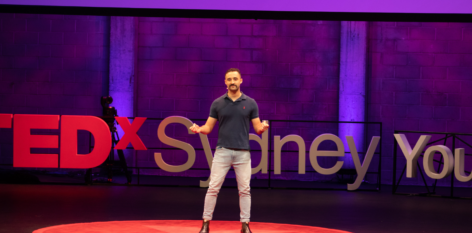2020 was a rollercoaster of highs and lows. At its best, the pandemic accelerated technology development, introduced new ways of connecting with loved ones, and showed us that remote work can be a viable alternative to traditional arrangements.
However, not everyone has benefited equally from these changes. Some Australians are now facing increased barriers to communication, due to social distancing, widespread use of opaque face masks, and digital acceleration without a focus on accessibility. Organisations like Ai-Media, the lead captioning, transcription, and audio description partner for TEDxSydney 2020, are leading the way in driving the accessibility agenda as we move out of crisis phase and establish a new ‘business as usual’ in 2021.
Improving accessibility is a mission we can all support. Here are eight ways we can drive accessibility in an increasingly digital world.
Caption broadcasted and online events
Live or closed captioning all online and broadcasted events, can make audio content more inclusive for the 466 million people globally who suffer from hearing loss, and those for whom English is a second language. Whether using captioning services on video conferencing platforms, or technology solutions for captioning offered by organisations such as Ai-Media, in 2021 we can make our virtual events, broadcasts, streams, meetings, and classes more accessible by using captions.
Use live interpreters and offer diverse language subtitles
During the pandemic, critical public health messages have changed daily, sometimes even hourly. Leading by example during 2020, the NSW Government’s daily COVID-19 press conferences promoted consistent use of sign language interpreters. By using language interpreters, offering subtitles in diverse languages, and introducing sign language interpreters at events, we can make our content accessible to a wider audience. Now, more than ever, it is critical that we all consider how we can share information across diverse communities rapidly.
Encourage the use of transparent face masks
In September 2020, Apple Inc and Gallaudet University partnered to create FDA-approved face masks with a transparent panel to support those who rely on lip reading to converse with others. Masks were distributed for widespread use across both Apple’s retail and corporate teams. We can support accessibility by purchasing our own transparent face masks and encouraging the use of these masks in our workplaces.
Record events and enable multi-speed playback
Recording events and making them available to watch back at multiple playback speeds can make it easier for those who are deaf or hard-of-hearing or who speak limited English by giving them time to absorb content. Additionally, by asking keynote speakers to speak slowly, pause between key points, and repeat important messages, we can both appropriately pace captioning and make audio easier to follow.
Design for digital accessibility
Strong digital design can help diverse audiences interact with digital media, websites, apps, and other virtual assets. Adopting even a few design principles aligned to the international accessibility standards set out by the W3C Web Accessibility Initiative (WAI) can make a big difference. For example:
- Choose colours that are easy to distinguish, for those who are colour blind.
- Make functionality available from a mouse, keyboard, and assistive hardware.
- Minimise flashing content and provide warnings where needed.
- Use text reflows that resize text to fit the page, for those who are vision impaired and rely on the zoom function.
Use audio description and alternative text
Audio (or video) description provides an auditory narration of what is being shown on screen in a video. This can include descriptions of facial expressions, events taking place, scenery, and on-screen text, such as titles. Audio description is becoming more common, especially as new accessibility regulations are introduced, and organisations like Ai-Media offer it as a service. Alternative (or alt) text provides descriptions of images and can be used on websites so that screen-reading tools are able to provide auditory narration of images. By making use of audio descriptions and alternative text, we can ensure that those who are vision impaired have equal access to our content.
Support accessible and safe remote work environments
Accelerated work-from-home arrangements have redefined what it means to protect the health and wellbeing of our loved ones and team members. To support equal opportunity to absorb critical information, we can focus on promoting equal access to quiet spaces at home, glare-free screens, ergonomic equipment, and assistive software and hardware. Check out Sarah Houbolt’s 2017 TEDxSydney talk for more on designing spaces which support universal access.
Provide transcripts for virtual events, videos, and files
Supplementing recorded events or media files with written transcripts can increase accessibility and improve comprehension. This has the added benefit of supporting organisations with knowledge sharing and compliance requirements. Some video conferencing platforms provide transcripts when recording meetings and organisations like Ai-Media offer professional transcription services across entire content suites, making it easy for us to provide transcripts for our audience in 2021.
Ensuring that all Australians have equal access to information, connections and opportunities is a collective responsibility. As we begin to move out of the crisis phase of the pandemic and establish new norms for 2021 and beyond, we can all make a difference by taking action to improve accessibility for the one billion people globally who live with some form of disability. By sharing these ideas with your friends, family, and colleagues, you can take one step towards increasing accessibility today.















































































































































































































































